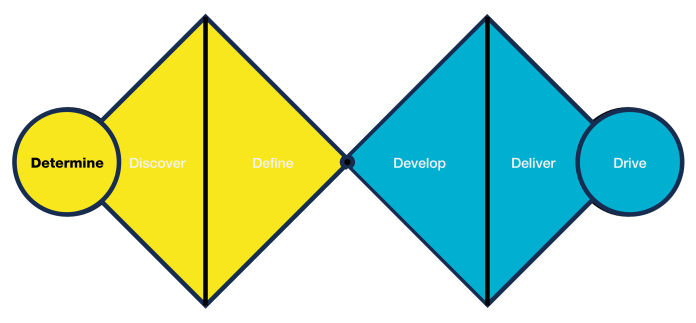English | Chinese (繁體中文)
The Role of This Tool in the First Phase of the Design Thinking method

In the first phase of the Design Thinking process, the goal is to understand the broader context, identifying key changes and challenges that are relevant to the problem at hand. This is where the Context Map comes into play.
A Context Map is a visual tool that helps teams understand and explore the environment in which a problem or a challenge exists. It helps to identify key stakeholders, their relationships, interactions, behaviors, motivations, and the challenges they face. By mapping out these elements, teams can better understand the major changes, challenges, and dynamics within the context of the problem space, which ultimately helps in identifying opportunities for design and innovation.
The Context Map embodies the Human-Centered approach of Design Thinking as it focuses on understanding and mapping the human factors within the system. By putting stakeholders, their behaviors, motivations, interactions, and challenges at the center of the problem-solving process, it ensures the human element is not overlooked.
The Context Map illuminates the realities, needs, and constraints of the people involved, keeping the focus on developing solutions that are not just innovative but also meaningful and valuable to the users. By visualizing these elements, the Context Map ensures the design process remains grounded in the human experience, a key principle of the Human-Centered approach.
The Procedure for Using This Design Thinking Tool
Step 1: Identify Stakeholders: Begin by identifying all relevant stakeholders. These might include direct users, indirect users, influencers, decision-makers, etc.
Step 2:Understand Relationships: Map out the relationships between these stakeholders. How do they interact? What are their dependencies, influences, or conflicts?
Step 3:Explore Behaviors and Motivations: Next, delve into the behaviors and motivations of each stakeholder. What are their goals, needs, and pain points?
Step 4:Map Interactions: Detail the interactions between stakeholders and the system or service. When and how do these interactions occur?
Step 5:Identify Challenges: Highlight the challenges faced by each stakeholder. These might be issues they encounter when interacting with the system or each other.
Step 6:Visualize the Context: Finally, synthesize all the information gathered into a single visual map. This can be done using various formats like diagrams or infographics, depending on the complexity of the information.
The Worksheet of This Tool

Note: In order to enhance the efficiency and effectiveness of business innovation and digital transformation projects, we have joined forces with data and digital experts to launch Data-Driven Design Thinking Tools and Technologies. Details have been announced in the seminar of 「數據驅動的設計思維,更快更準實現創新成果」. If you need to revisit the seminar, please click on the following link: https://www.innoedge.com.hk/data-driven-design-thinking-2023







![[Class Recap] Empowering Your Creativity and Innovation Power](https://i0.wp.com/www.innoedge.com.hk/wp-content/uploads/2024/04/20240329_180728-scaled.jpg?resize=218%2C150&ssl=1)
![[Class Recap] Developing Sustainable Business Models through Systems Thinking](https://i0.wp.com/www.innoedge.com.hk/wp-content/uploads/2024/04/20240328_181754-scaled.jpg?resize=218%2C150&ssl=1)
![[Class Recap] Creating Wonderful User Experience through Customer Journey Design](https://i0.wp.com/www.innoedge.com.hk/wp-content/uploads/2024/04/20240328_131024-scaled.jpg?resize=218%2C150&ssl=1)










